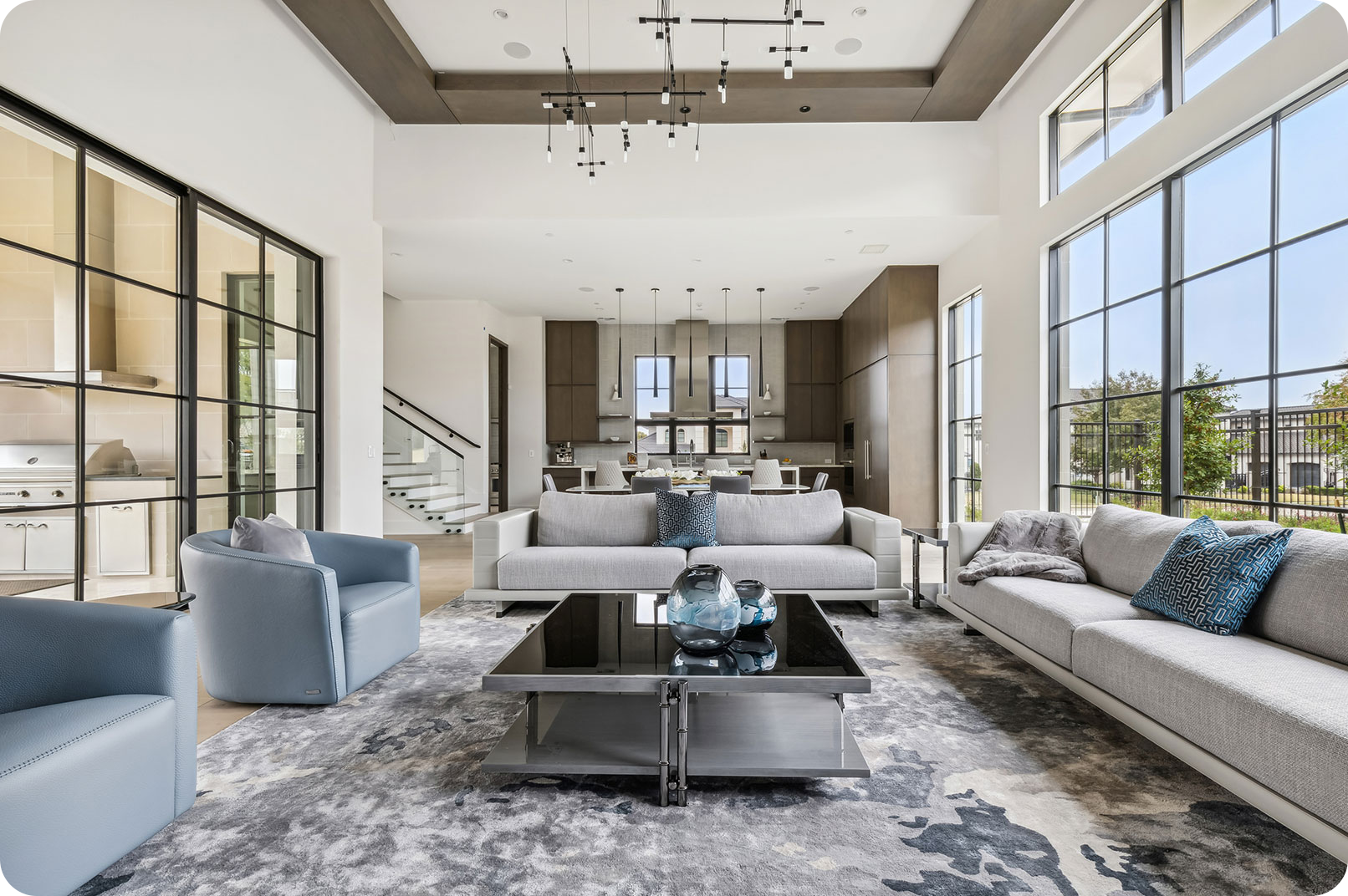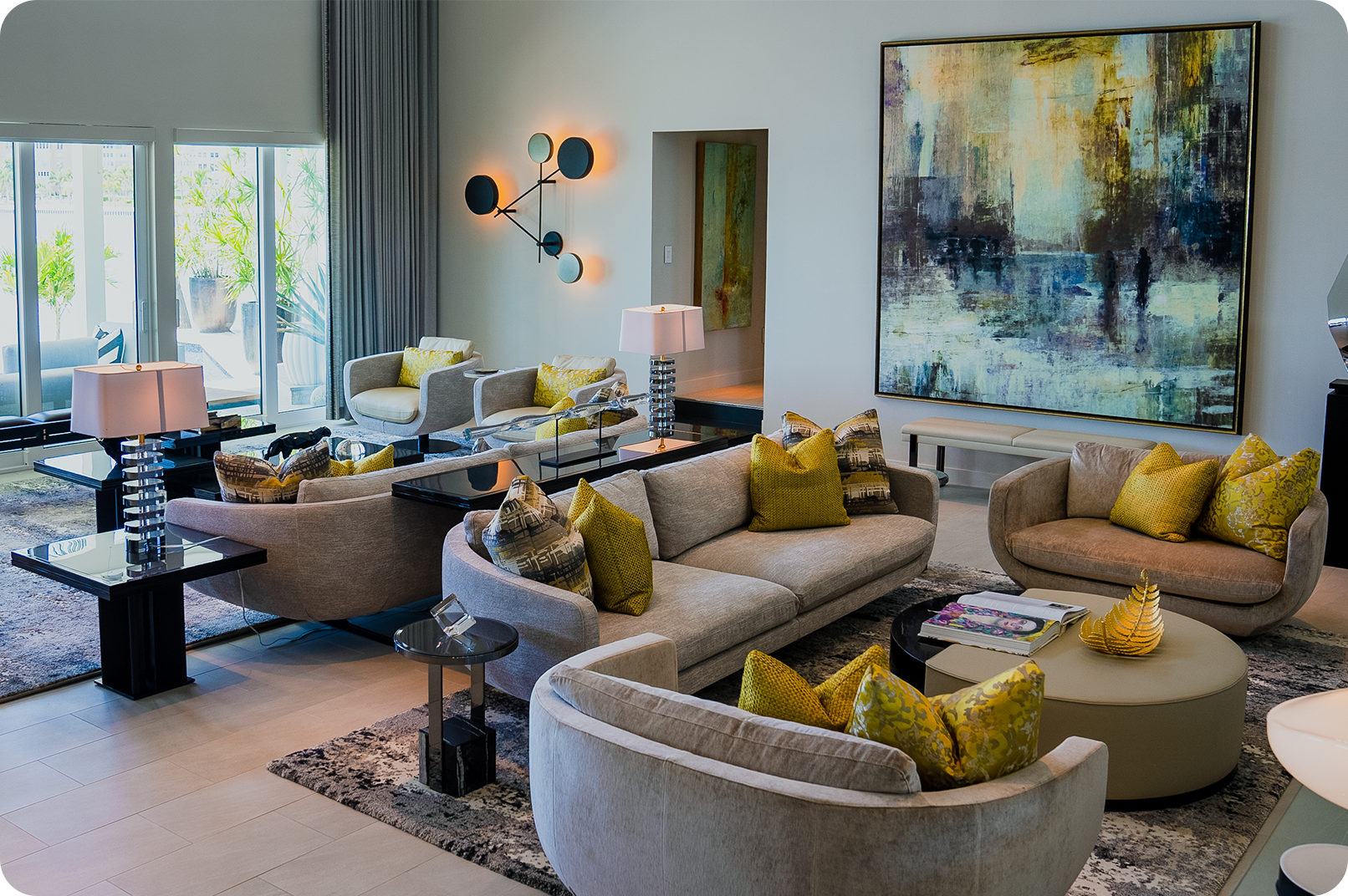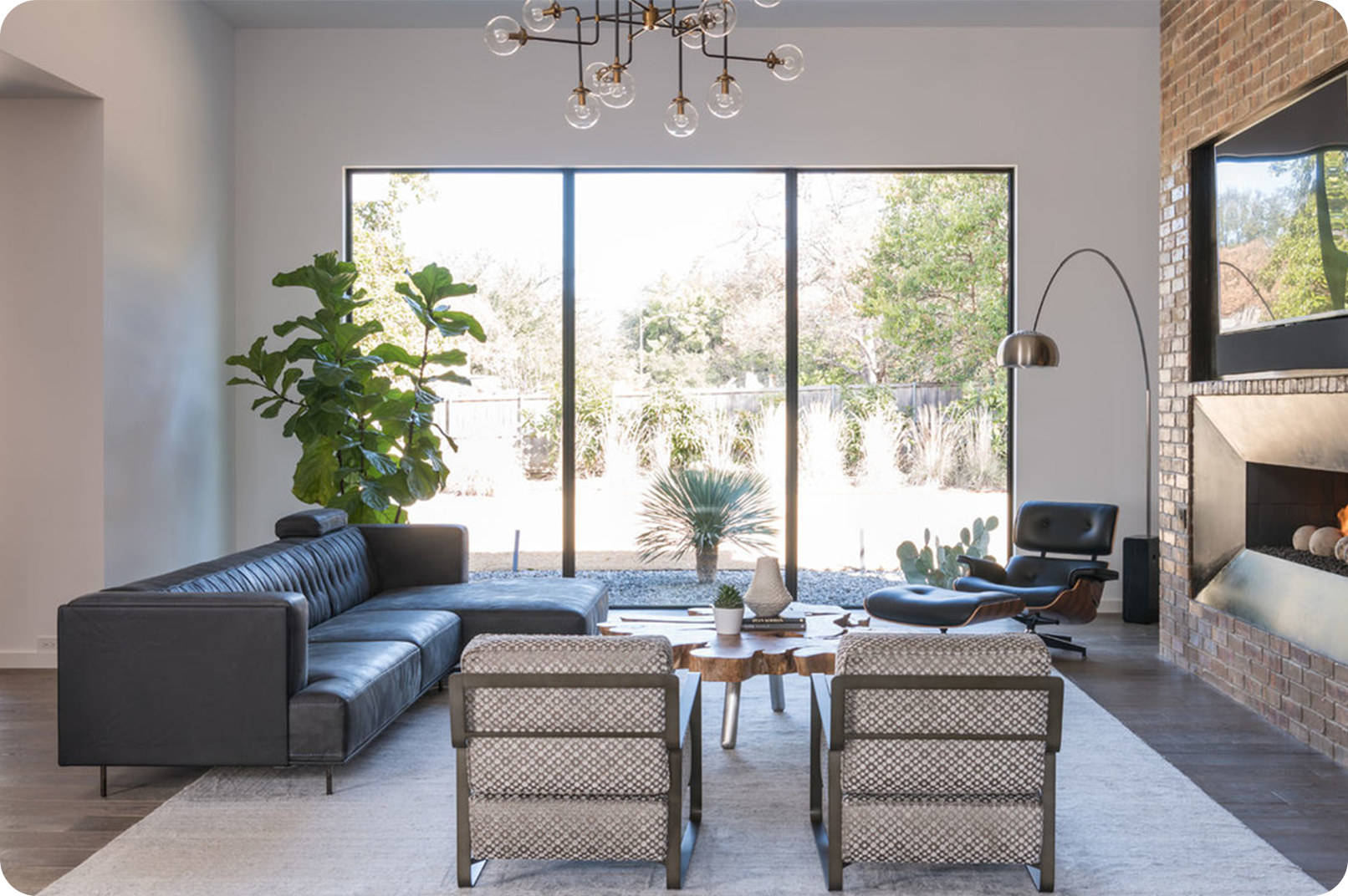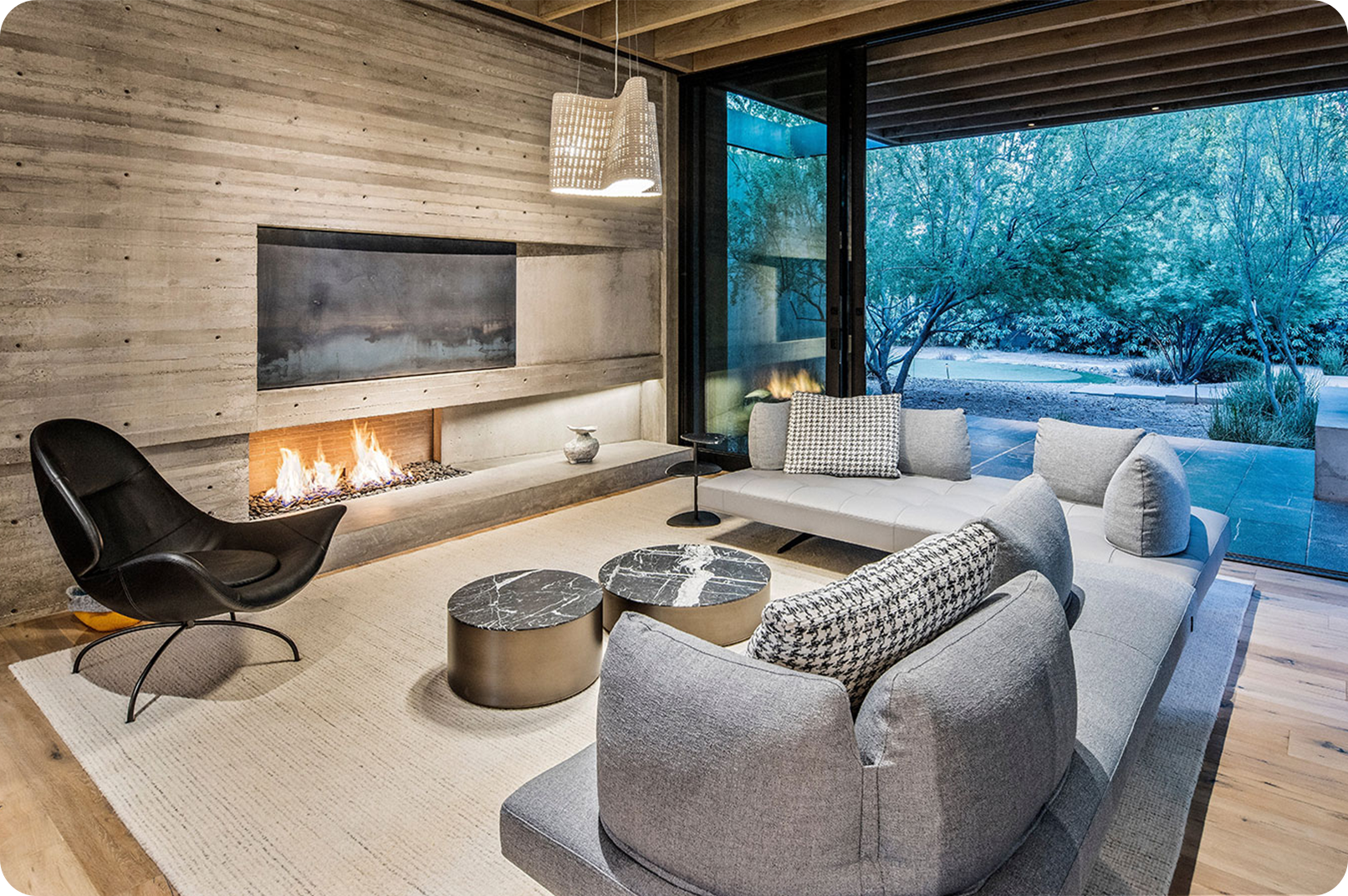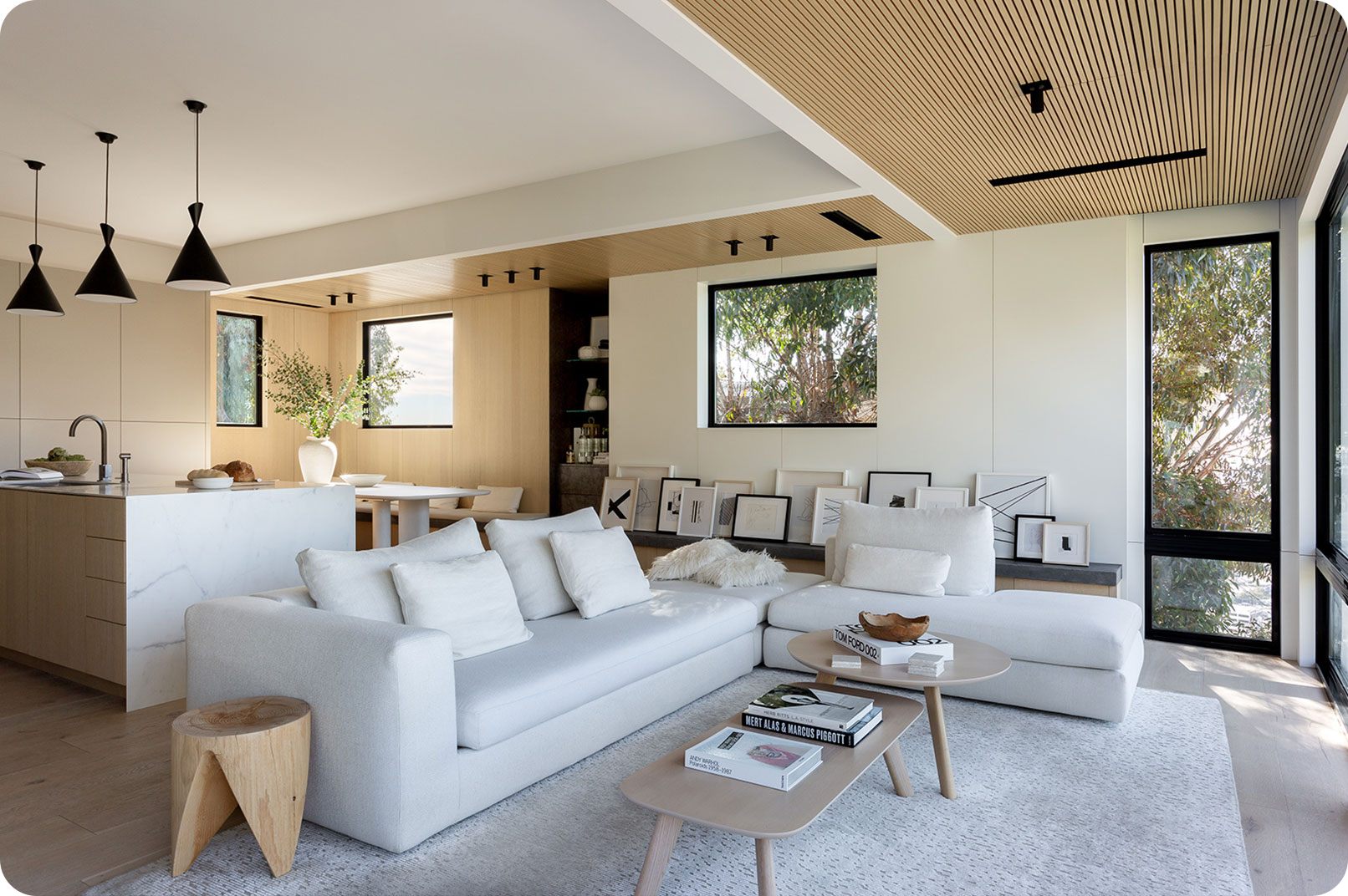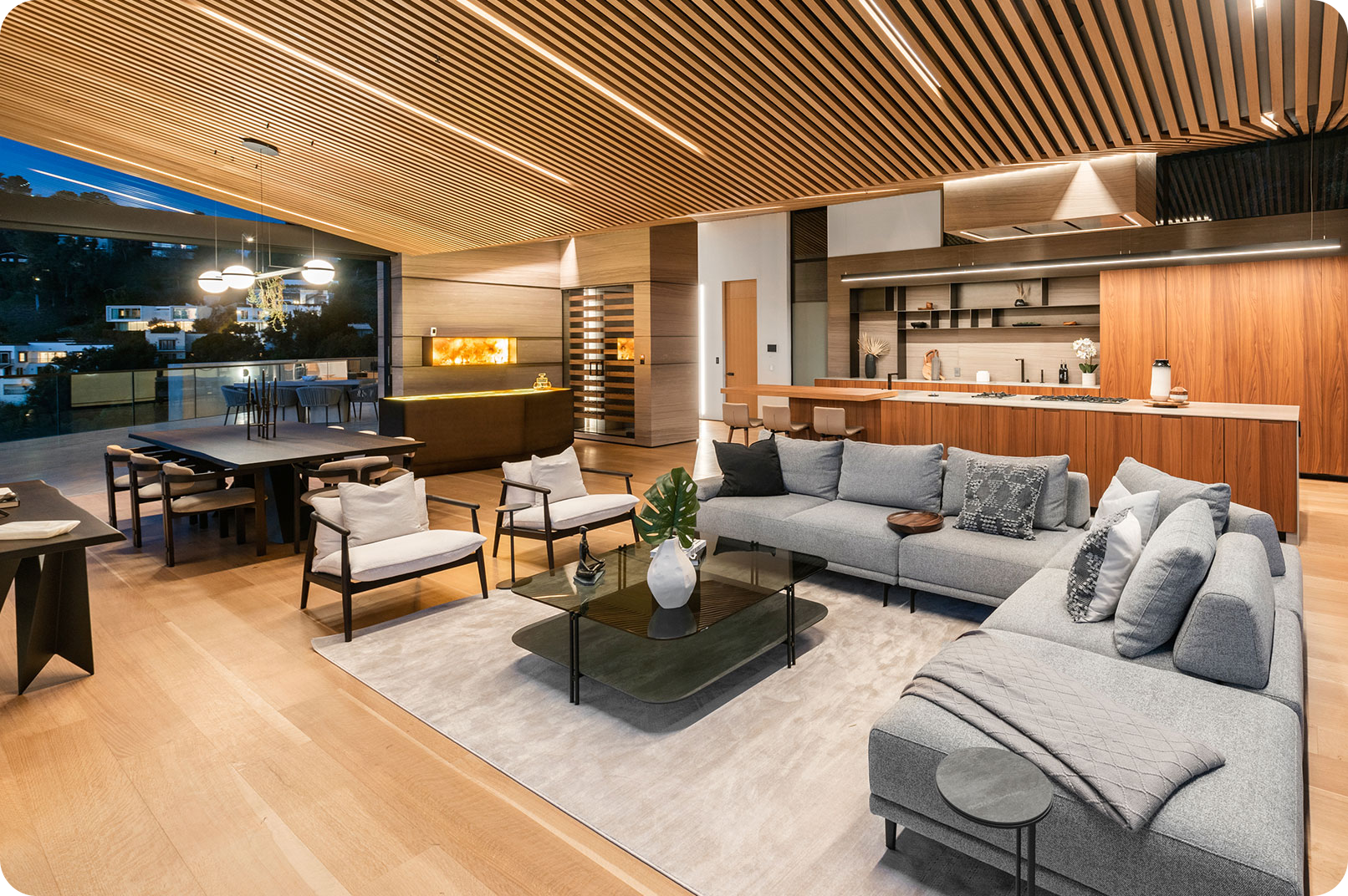In the world of interior design, modern furniture stands as a timeless testament to style, functionality, and innovation. Evolving from minimalist designs to bold contemporary statements, modern furniture encompasses a diverse range of styles and forms, each serving a unique purpose. Whether outfitting a high-rise apartment, a cozy living room, or a chic office space, modern furniture allows for creativity while maintaining a sense of sophisticated simplicity. Here, we dive into the main categories of modern furniture, highlighting their distinctive features and design philosophies.
MINIMALISM
A Minimal Home with Carefully Curated Designs, designed by Jiji Aouji
At the heart of modern design, minimalist furniture strips away excess ornamentation to focus on form and function. Inspired by the Bauhaus movement and designers like Ludwig Mies van der Rohe, minimalist pieces feature clean lines, neutral color palettes, and unembellished surfaces. The furniture is often lightweight and versatile, offering sleek silhouettes that fit effortlessly into a variety of settings. The minimalist ethos invites spaces to feel open, uncluttered, and serene, with each piece of furniture having a clear, purposeful role. Key features of minimalist design include neutral colors (such as black, white, and gray), clean lines, geometric shapes, and simple, functional forms.
MINIMALIST LUXURY IN ALLEN, TEXAS
MAXIMALISM
A Stunning Refresh with Sweeping Bay Views, designed by Kohl Sudnikovich
Maximalism is a celebration of bold expression, where more is truly more. This vibrant design style embraces an eclectic mi of colors, patterns, textures, and materials, creating spaces that are as layered as they are luxurious. Maximalist furniture often features intricate detailing and dramatic shapes, exuding opulence while maintaining a contemporary edge. It's a style that revels in individuality, inviting personality and creativity into every corner of the room. In maximalism, every piece is a statement, yet with curated thoughtfully, these elements harmonize into a cohesive, dazzlingly dynamic space.
A ST. PETERSBURG HOME THAT EMBRACES THE MAXIMALIST LIFESTYLE
MID-CENTURY MODERN
A Builder's Dream Home, designed by the Dallas Design Team
Originating in the mid-20th century, this category of furniture has remained a cornerstone of modern interior design. Mid-century furniture blends organic forms with functionality, favoring smooth, rounded edges and the use of natural materials like wood and leather. Chairs and tables often feature tapered wooden legs and sculptural, geometric shapes. The color palette tends to incorporate rich tones like mustard yellow, olive green, and burnt orange, adding warmth and vibrancy to minimalist backdrops.

INDUSTRIAL
An Arizona Abode with Considerable Design Appeal, designed by Richard Bustos
Inspired by the raw beauty of factories and warehouses, industrial furniture brings an urban edge to contemporary spaces. Characterized by a combination of unfinished metal, exposed brick, and reclaimed wood, industrial pieces often feature rugged textures and an intentionally "unfinished" look. This style embraces the imperfections of materials and the beauty of utilitarian design, with pieces like metal stools, exposed pipe shelving, and raw wooden dining tables becoming statements in their own right.
AN INDUSTRIAL BEAUTY THAT COMPLEMENTS ARIZONA'S RUGGED TERRAIN
SCANDINAVIAN
Franklin House, designed by Sean Ames
Known for its emphasis on simplicity, functionality, and craftsmanship, Scandinavian furniture continues to captivate with its clean, functional designs. Drawing from the beauty of the Nordic landscape, Scandinavian furniture is made from light woods like pine and birch, complemented by neutral tones and pops of color. The design philosophy behind Scandinavian pieces is rooted in "hygge"–the Danish concept of comfort and coziness. Furniture often boasts subtle curves and soft angles, making the space feel inviting and warm.
A COZY SCANDINAVIAN LIFESTYLE NESTLED IN THE HOLLYWOOD HILLS
CONTEMPORARY
A Luxury Beverly Hills Home Furnished in Record Time, designed by Richard Bustos
While "modern" often refers to a specific period in design history, "contemporary" refers to the styles and trends of the present day. Contemporary furniture is constantly evolving, drawing inspiration from various movements while embracing new materials, technologies, and artistic expressions. This category includes a broad range of designs, from sleek and minimalist to eclectic and maximalist. What unites contemporary furniture is a focus on innovation, with many designers experimenting with new materials like glass, acrylic, and unconventional metals.
TRENDY CONTEMPORARY DESIGN COMPLEMENTS THIS BEVERLY HILLS MANSION
ART DECO
The Drakestone, designed by Nicole George
Art Deco, with its origins in the early 20th century, is a fusion of luxury, glamour, and geometric form. This category features opulent materials such as lacquered wood, marble, glass, and polished metals like brass and chrome. Art Deco furniture often incorporates bold lines, intricate detailing, and striking patterns, giving it a sense of high-end sophistication. The style is characterized by symmetry and a combination of sleek, angular forms with rich, decorative elements that evoke a sense of elegance and grandeur.

Modern furniture comes in many forms, each with its own unique set of principles and aesthetic goals. From the refined simplicity of minimalist furniture to the vibrant complexity to modern maximalism, each category offers an opportunity to express creativity and functionality. As interior design continues to evolve, these various styles will remain fundamental in shaping the way we interact with the spaces around us, proving that modern furniture isn't just about trends–it's about creating environments that reflect our lifestyles, passions, and ever-changing world.






